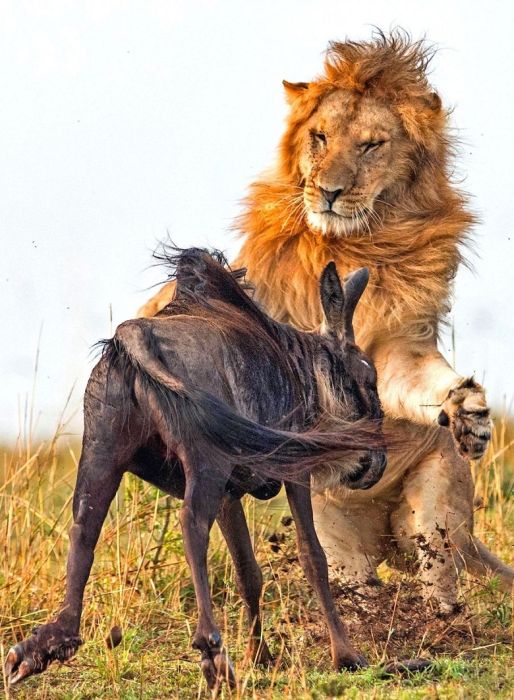|
|
Lion Against A Wildebeast
|
Because of their migratory ways, the wildebeest do not form permanent pair bonds. The wildebeest mating season, rut, is when the males establish temporary territories and try to attract females. These small territories are about 3000 m2, with up to 300 territories per km2. The males defend these small territories from other males while trying to attract females that are ready to mate. The males entice females into their territories with grunts and distinctive antics. Wildebeest usually breed at the end of the rainy season when the animals are most fit. The mating season usually occurs between May and July, and birthing usually takes place between January and March, at the start of the wet season. The gestation period is about eight to nine months, and the average estrous cycle is about 23 days. Wildebeest females breed seasonally and ovulate spontaneously. Groups of wildebeest females and young live in the small areas established by the male. When groups of wildebeest join together, the female to male ratio is larger, as the females flock to the areas held by fewer males. This female-dominated sex ratio may be due to illegal hunting and human disturbance. Higher male mortality has been attributed to illegal hunting.
Threats and conservation
Today many wildebeest populations are experiencing rapid declines. Overland migration as a biological process requires large connected landscapes, which are increasingly difficult to maintain, particularly over the long term, when human demands on the landscape compete, as well. The most acute threat comes from migration barriers, such as fences and roads. In one of the more striking examples of the consequences of fence-building on terrestrial migrations, Botswanan authorities placed thousands of kilometres of fences across the Kalahari that prevented wildebeests from reaching watering holes and grazing grounds, resulting in the deaths of tens of thousands of individuals, and dropping the wildebeest population to less than 10% of its previous size. Illegal hunting is a major conservation concern in many areas, along with natural threats posed by main predators (such as lions, leopards, hunting dogs and hyenas). Where it lives alongside the blue wildebeest, the two can hybridise, and this is regarded as a potential threat to the maintenance of the species.
|
|









